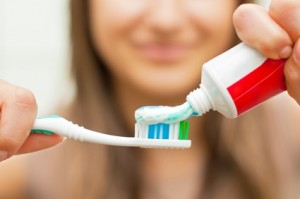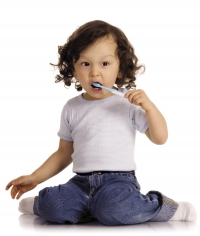 What’s the best way to clean my teeth?
What’s the best way to clean my teeth?
This is a question we hear quite often, and its an important one. So let’s just talk a bit about the best way to clean your teeth.
Gum disease and decay are caused by bacteria. That’s why the goal of proper home care is to keep the number of bacteria in your mouth below harmful levels.
In most cases brushing, flossing, and tongue scraping are very effective in removing bacteria – if they are done correctly. But since studies show that up to 75% of the adult population has some level of gum disease that may be increasing the risk for many diseases, I think we can assume there is a problem here that needs to be addressed.
Let’s run through some weapons you can use in your daily battle against the bacteria that are causing decay, gum disease, and inflammation in your mouth.
Brushing
Brushing with a soft brush is the most effective plaque removal system for accessible areas. Brushing mechanically removes bacteria and plaque from your teeth and gums. The biggest problem is not taking the time required to do a thorough job. Get a timer and make yourself brush for at least two minutes twice a day.
Tongue scraping
The tongue can harbor huge populations of bacteria. So if you are cleaning the gums and teeth, but not the tongue, then bad bugs living on the tongue have an easier time repopulating the gums.
Tongue scrapers come in a wide variety of forms and most are roughly the same effectiveness. Brush your tongue whenever you brush your teeth, and you should use a tongue scraper at least once a day. Start doing this TODAY!
Flossing
Brushing cannot reach the areas between your teeth, and that’s why flossing is essential for removing bacteria between the teeth.
There are many types of floss and it doesn’t matter much what kind you use, as long as you use it. As with brushing, the main thing is to slow down. Simply going around your mouth and snapping floss between your teeth isn’t going to cut it. Make sure you get the floss gently all the way up under the gums on each tooth.
Flossing is typically the biggest problem area with oral hygiene. Some people do it faithfully, some people do it occasionally, some people won’t do it, and some people can’t do it because of limited manual dexterity, large hands, arthritis, etc.
If you simply can’t or won’t floss, if you have extenuating circumstances like gum pockets deeper than 3 mm, or or for whatever reason simple brushing and flossing aren’t working for you, then you need to add other weapons to your arsenal.
If what your doing isn’t working, then don’t spend your entire lifetime using the same failed strategy over and over. Don’t spend your entire life with bleeding gums and the associated health risks. Do something different!
The bottom line is you either have to floss, or you have to do something different. The following are some other strategies you can use.
Power brushes
There are numerous power brushes on the market that may be of benefit, especially if you have dexterity problems that make it difficult to brush and floss.
Water Flossing
Devices like that Water Pic use a concentrated stream of water to clean the teeth and gums. Water flossing is particularly effective if you have gum pockets since often these cannot be cleaned thoroughly with normal brushing and flossing.
If need be, mouth rinses can be used with the irrigator as a further step to eliminate inflammation. Understand that water irrigation devices are not a substitute for brushing. We use irrigation as an adjunct for people who won’t or can’t floss properly, or when there are areas in your mouth that are not cleanable any other way.
You should consult a dentist about proper use of the water flossing devices so as to not cause damage.
Tooth picks
These can be effective if you have spaces between your teeth. Care should be taken because overuse or being too aggressive with toothpicks may cause loss of gum tissue between the teeth. The key is to be gentle!
Plaque Discloser
People are often confused as to why they get decay even if they brush and floss regularly. This happens because they are not cleaning the teeth as well as they think they are. Disclosers contain a harmless dye that makes plaque on the teeth visible. After you clean your teeth, take the disclosing agent and see all the plaque remaining on the teeth. Brush and floss again and then recheck with the discloser. Do this for a few days and you will easily train yourself to be very effective with your home care. Buy some plaque discloser at your pharmacy today!
The bottom line is that you have to do whatever it takes to stop decay and gum disease. If you can’t do it with just brushing and flossing, then use other tools that are cheap and effective.












